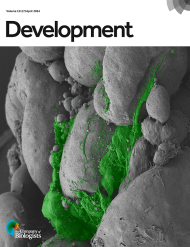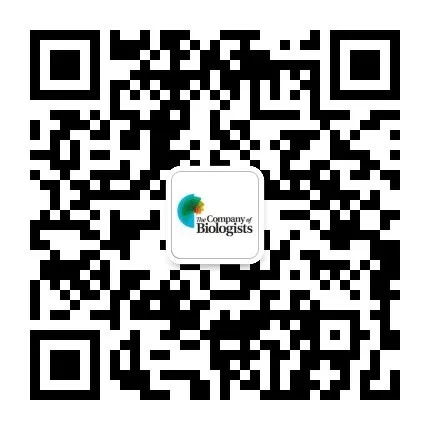Th17 cell master transcription factor RORC2 regulates HIV-1 gene expression and viral outgrowth
Preprint posted on 28 March 2021 https://www.biorxiv.org/content/10.1101/2021.03.27.435072v1
Article now published in Proceedings of the National Academy of Sciences at http://dx.doi.org/10.1073/pnas.2105927118
Categories: immunology, molecular biology
Background
As reported by UNAIDS*, almost 40 million people across the world were living with HIV in 2019. Since the 1990s, the development of anti-retroviral therapies means that viral proteins can be inhibited and viral load reduced to undetectable levels. These therapies greatly increase the quality of life and longevity of people infected with HIV-1. Unfortunately, infected individuals remain at risk of relapse as reservoirs of virus-infected T lymphocytes cells throughout the body cannot be eliminated by anti-retroviral therapy.
One of these reservoirs is the mucosae, such as the lining of the gut, where the main lymphocyte population are Th17 cells. Recently, the laboratory of Ariberto Fassati discovered that two compounds that inhibit HIV-1 are also know inhibitors of the Th17 cell master transcription factor RORC2 (Zhyvoloup, Melamed, et al., 2017, PLoS Pathog.). In this current preprint, Wiche Salinas, Zhang and colleagues explore the importance of RORC2 for persistent HIV-1 infection. By testing well-characterised RORC2 inhibitors created by the pharmaceutical company GlaxoSmithKline, the authors identify RORC2 as a host co-factor for HIV-1 infection that activates HIV-1 gene expression.
* UNAIDS: the global policy coordinator for the United Nations (UN) for Acquire Immunodeficiency Syndrome (AIDS) and HIV
Key findings
- Four inhibitors of the transcription factor RORC2 also inhibited infection of Jurkat cells by HIV-1 and the replication of HIV-1 viruses in primary memory T cells. Moreover, knock-down of RORC2 in Jurkat cells and primary memory T cells decreased HIV-1 replication. Conversely, overexpression of RORC2 in both Jurkat cells and HEK293T cells (the latter do not normally express this transcription factor) enhanced HIV-1 infection. This showed that human RORC2 is important for HIV-1 infection.
- Next, the authors wondered which stage of HIV-1 infection required RORC2. RORC2 inhibition did not decrease the reverse transcription of the viral RNA, nuclear entry nor integration of viral DNA into the genome. However, if cells that were already infected with HIV-1 were treated with RORC2 inhibitors, the level of viral mRNA was decreased, suggesting that the RORC2 is important for the expression of the viral genes
- Since RORC2 is a transcription factor, it can activate viral gene expression by directly binding to the integrated viral DNA. To detect this, the authors performed chromatin immunoprecipitation of RORC2 in HIV-1 infected Jurkat cells and observed that RORC2 does bind to integrated viral DNA. RORC2 binds specifically in a region of the viral genome that is characterized to bind other retinoic acid receptors.
- Lastly, analysis of memory T cells from patients with HIV-1 showed that cells that express RORC2 are enriched in viral DNA. If these infected cells from patients are incubated with RORC2 inhibitors, viral outgrowth was limited, suggesting that RORC2 inhibitors can have a clinical application for the control of HIV-1.
Importance and significance
The location of HIV-1 infected T cell reservoirs are mostly in the mucosae, such as the gut, where the main lymphocyte population is Th17 cells. These reservoirs are maintained since people living with HIV-1 still suffer from residual immune dysfunction, such as systemic inflammation, even during anti-retroviral therapies. Importantly, residual HIV-1 transcription inside reservoir cells is driving at least in part this persistent inflammation. This constant inflammatory status allows the virus to persist, because of constant lymphocyte proliferation in response to this stimulus. In fact, the severity of this systemic inflammation corelates with the mortality, morbidity and co-morbidities that these patients suffer from.
Th17 cells are also important for the virus during the early stages of HIV-1 infection. For example, the depletion of Th17 cells from the gut leads to the leakage of bacterial and fungal products into circulation, triggering systemic inflammation. This then forces T lymphocytes to multiply as they respond to inflammation, indirectly creating more cells that HIV-1 can infect. Further, this ensures that there is continuous leakage of pathogenic material through the now depleted mucosal surfaces.
The results published by Wiche Salinas, Zhang and colleagues show that HIV-1 uses the master transcription factor of Th17 cells to drive its own gene expression. One important aspect the authors note is that RORC2 might not drive the expression of viral genes per se. It might work by changing the chromatin status of enhancers and promoters to a poised state. Transcription would then be driven by other Th17 transcription factors, such as NF-kB, BAFT and STAT4. These results open avenues for development of new therapies as none of the current therapies in use target viral gene expression. These new therapies could be extremely useful for eliminating lingering viral reservoirs.
Posted on: 20 April 2021
doi: https://doi.org/10.1242/prelights.28448
Read preprintSign up to customise the site to your preferences and to receive alerts
Register hereAlso in the immunology category:
Fetal brain response to maternal inflammation requires microglia
Alteration of long and short-term hematopoietic stem cell ratio causes myeloid-biased hematopoiesis
RIPK3 coordinates RHIM domain-dependent inflammatory transcription in neurons
Also in the molecular biology category:
Fetal brain response to maternal inflammation requires microglia
Clusters of lineage-specific genes are anchored by ZNF274 in repressive perinucleolar compartments
Nanos2+ cells give rise to germline and somatic lineages in the sea anemone Nematostella vectensis
preLists in the immunology category:
Journal of Cell Science meeting ‘Imaging Cell Dynamics’
This preList highlights the preprints discussed at the JCS meeting 'Imaging Cell Dynamics'. The meeting was held from 14 - 17 May 2023 in Lisbon, Portugal and was organised by Erika Holzbaur, Jennifer Lippincott-Schwartz, Rob Parton and Michael Way.
| List by | Helen Zenner |
Fibroblasts
The advances in fibroblast biology preList explores the recent discoveries and preprints of the fibroblast world. Get ready to immerse yourself with this list created for fibroblasts aficionados and lovers, and beyond. Here, my goal is to include preprints of fibroblast biology, heterogeneity, fate, extracellular matrix, behavior, topography, single-cell atlases, spatial transcriptomics, and their matrix!
| List by | Osvaldo Contreras |
Single Cell Biology 2020
A list of preprints mentioned at the Wellcome Genome Campus Single Cell Biology 2020 meeting.
| List by | Alex Eve |
Autophagy
Preprints on autophagy and lysosomal degradation and its role in neurodegeneration and disease. Includes molecular mechanisms, upstream signalling and regulation as well as studies on pharmaceutical interventions to upregulate the process.
| List by | Sandra Malmgren Hill |
Antimicrobials: Discovery, clinical use, and development of resistance
Preprints that describe the discovery of new antimicrobials and any improvements made regarding their clinical use. Includes preprints that detail the factors affecting antimicrobial selection and the development of antimicrobial resistance.
| List by | Zhang-He Goh |
Zebrafish immunology
A compilation of cutting-edge research that uses the zebrafish as a model system to elucidate novel immunological mechanisms in health and disease.
| List by | Shikha Nayar |
Also in the molecular biology category:
BSCB-Biochemical Society 2024 Cell Migration meeting
This preList features preprints that were discussed and presented during the BSCB-Biochemical Society 2024 Cell Migration meeting in Birmingham, UK in April 2024. Kindly put together by Sara Morais da Silva, Reviews Editor at Journal of Cell Science.
| List by | Reinier Prosee |
‘In preprints’ from Development 2022-2023
A list of the preprints featured in Development's 'In preprints' articles between 2022-2023
| List by | Alex Eve, Katherine Brown |
CSHL 87th Symposium: Stem Cells
Preprints mentioned by speakers at the #CSHLsymp23
| List by | Alex Eve |
9th International Symposium on the Biology of Vertebrate Sex Determination
This preList contains preprints discussed during the 9th International Symposium on the Biology of Vertebrate Sex Determination. This conference was held in Kona, Hawaii from April 17th to 21st 2023.
| List by | Martin Estermann |
Alumni picks – preLights 5th Birthday
This preList contains preprints that were picked and highlighted by preLights Alumni - an initiative that was set up to mark preLights 5th birthday. More entries will follow throughout February and March 2023.
| List by | Sergio Menchero et al. |
CellBio 2022 – An ASCB/EMBO Meeting
This preLists features preprints that were discussed and presented during the CellBio 2022 meeting in Washington, DC in December 2022.
| List by | Nadja Hümpfer et al. |
EMBL Synthetic Morphogenesis: From Gene Circuits to Tissue Architecture (2021)
A list of preprints mentioned at the #EESmorphoG virtual meeting in 2021.
| List by | Alex Eve |
FENS 2020
A collection of preprints presented during the virtual meeting of the Federation of European Neuroscience Societies (FENS) in 2020
| List by | Ana Dorrego-Rivas |
ECFG15 – Fungal biology
Preprints presented at 15th European Conference on Fungal Genetics 17-20 February 2020 Rome
| List by | Hiral Shah |
ASCB EMBO Annual Meeting 2019
A collection of preprints presented at the 2019 ASCB EMBO Meeting in Washington, DC (December 7-11)
| List by | Madhuja Samaddar et al. |
Lung Disease and Regeneration
This preprint list compiles highlights from the field of lung biology.
| List by | Rob Hynds |
MitoList
This list of preprints is focused on work expanding our knowledge on mitochondria in any organism, tissue or cell type, from the normal biology to the pathology.
| List by | Sandra Franco Iborra |











 (No Ratings Yet)
(No Ratings Yet)